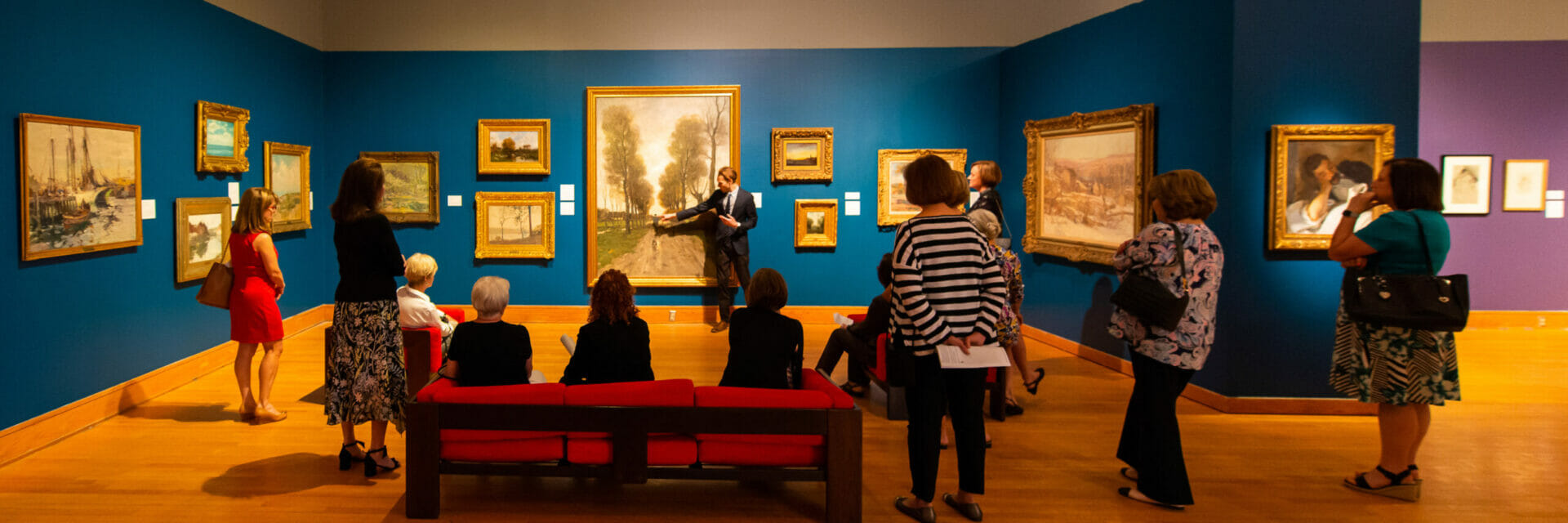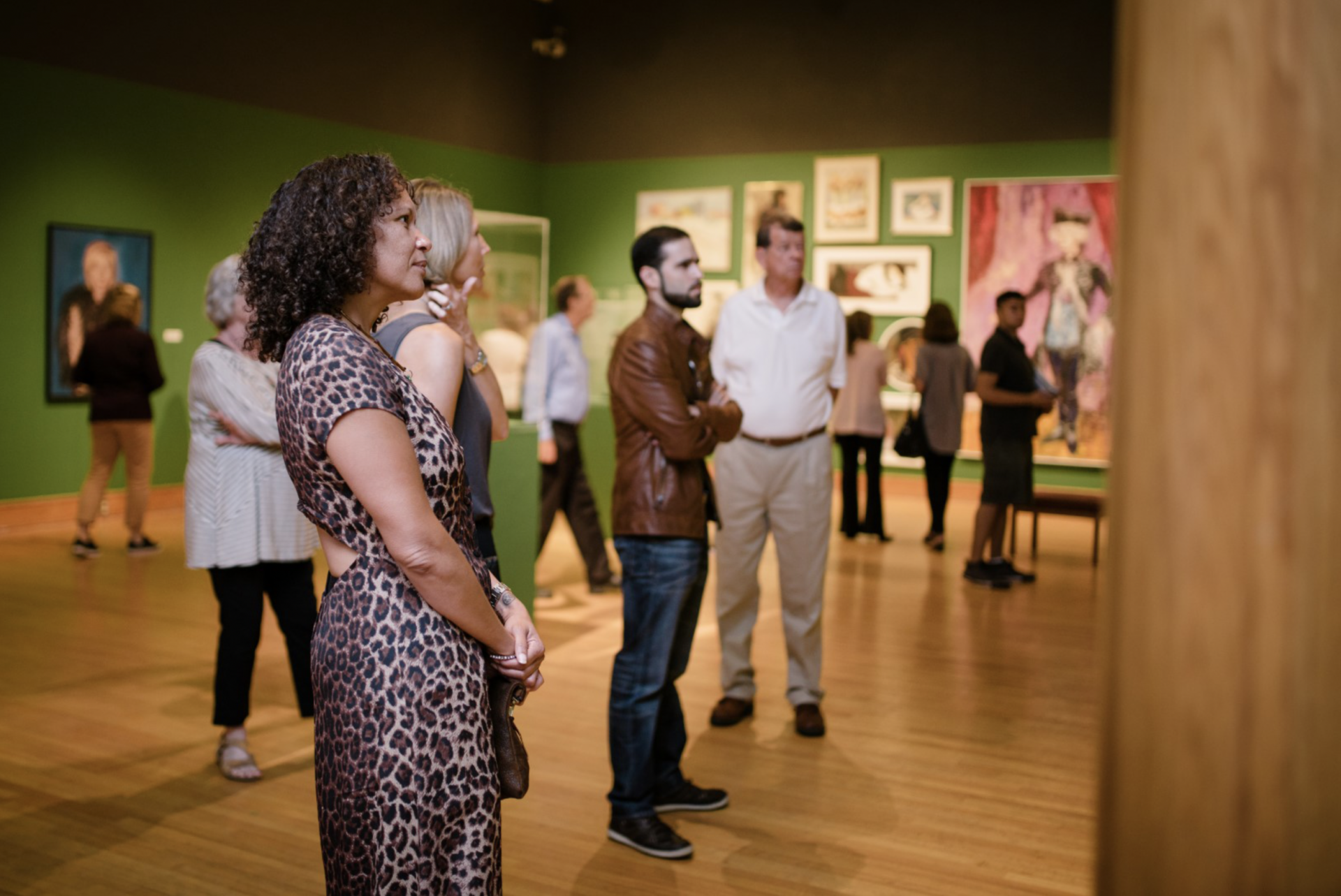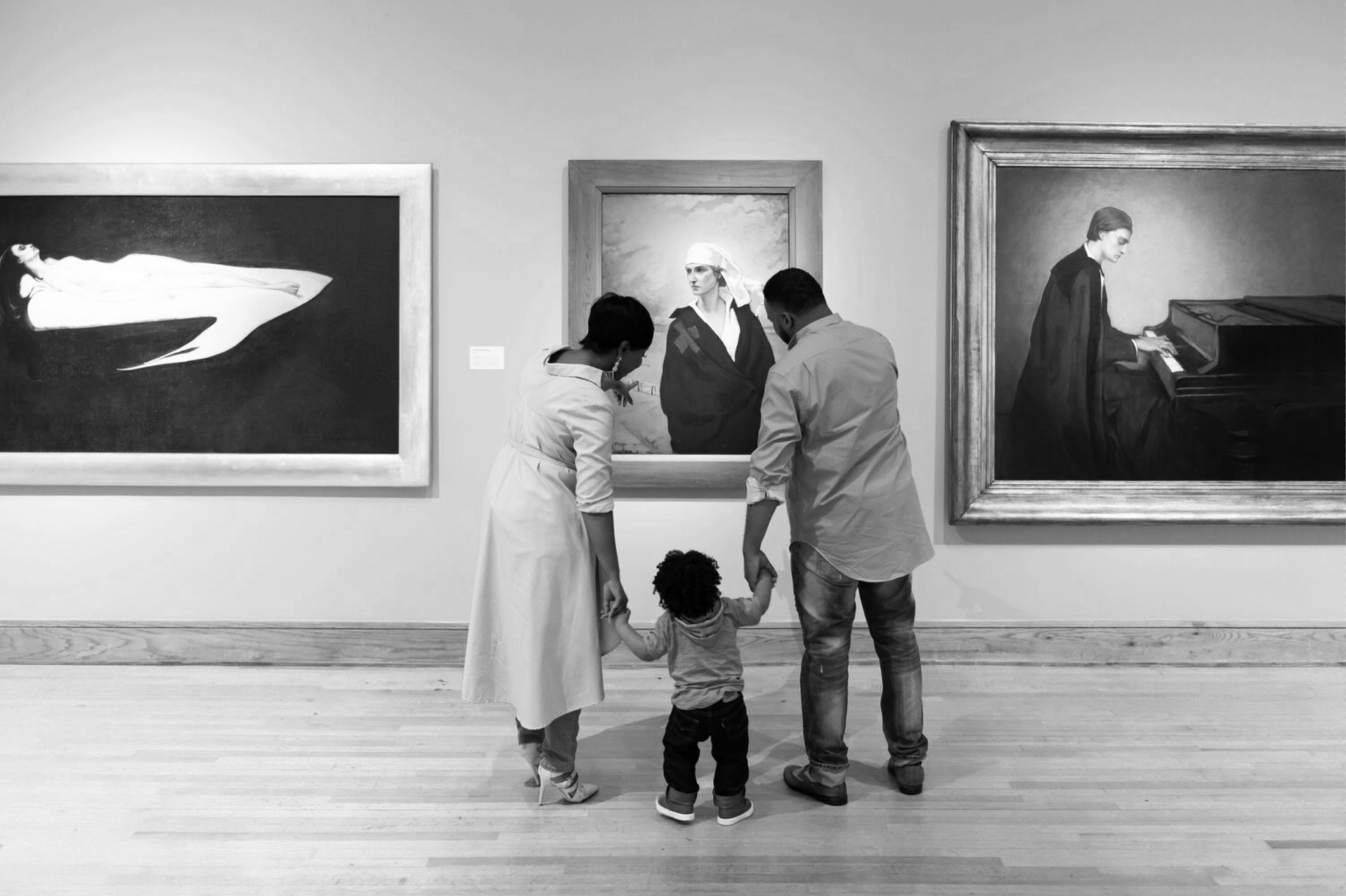
Why Healthy Living Includes Trips to Museums
And the Polk Museum of art is a great place to start
By Alex Rich
Executive Director of Polk Musem of Art
It’s a proven fact that visiting a museum can make you healthier. I’m not saying this just because I’m the director of the museum and want you to come visit us, I say this because it is true. I see it daily—and decades of data and audience feedback support it.
Art connects. Art frees us from self-obsession and isolation. Art makes us feel for one another. Art changes us.
Art makes us healthier.
A Museum Built With Your Wellness in Mind
The Polk Museum of Art has been transformed from its earliest iteration in 1966 (with farm animals) into an accredited Smithsonian-affiliated academic community museum. It offers programming that invites creativity and conversation, as well as world-class, didactic exhibitions that aim to present insight into the worlds of others and to give visitors the ability to see the past, present and future in new ways. This may sound very high-brow, but every aspect of a museum like ours is “curated” to boost your well-being.
Entering a museum is an invitation to take a step back, to see our lives in the larger context of time, and to place it into perspective.
Our diverse spring slate of exhibitions, which includes our blockbuster, long-planned “Edward Hopper and Guy Pène du Bois: Painting the Real” and our eye-opening “Lauren Austin: Life in Quilts” shows, speak to this point. These exhibitions, alongside our galleries dedicated to student artwork, African and oceanic art, and our “Hungry Planet” and “Material World” exhibitions, open your eyes and minds.
Look Closely and Think Clearly
When most of us think about art museums, we may think of spot-lit rooms filled with Old Masters or Van Goghs or Ancient Egyptian art. We may recall field trips or rainy days spent with our grandparents or even that one incredible work of art that has stuck with us our whole lives (my art-world North Star is the Temple of Dendur at the Metropolitan Museum of Art). Rarely, though, do we think of the effects of museums on our personal well-being.
But museums offer accessible means to support our minds and physical wellness. Museums are sites for inducing awe and curiosity (emotions that momentarily detour us away from stress and preoccupations). Museums inspire social interaction (“Let’s go see that new Rodin show at the PMoA!”), critical thinking (“Why is that art?”), and understanding (“Wow, the way she painted this makes me feel her pain!”).
Art pushes us to think deeply, observe critically, and enjoy multiple and diverse perspectives on the world. I see the impact this can have with my art history and museum studies students when we venture to the Polk Museum. Looking at “real” art firsthand can be illuminating and restorative.
A Prescription for Flourishing
Museums like ours offer programs that enhance people’s health while also motivating at-risk populations (individuals with dementia and seniors, people with autism, depression, or suffering from loneliness, etc.) to find relief and joy through art. Studying art has long been identified as a means for improving literacy skills, but the benefits of visiting art museums have also increasingly become the focus of medical and psychological studies.
Latest
Lakeland’s Own Vintage Ford
Lakeland's Own Vintage Ford Written...
Baker Undercover
Baker UndercoverBy Julianne...
Driven by Passion: The Larry Dobbs Story
Driven by Passion Written by Donald...
What is a Lakelander? | Bill Castle
What is a Lakelander? Bill Castle By...
What is a Lakelander? | Jairus Rutherford
What is a Lakelander? Jairus...
Museums have been cited as forums for turning “ill-being” into “flourishing” and as actual prescribed locations by physicians to improve patients’ health.

Whether you are young or old, admittedly artistic or less artistically-inclined, the Polk Museum of Art strives to be a “medicine-free” health incubator and creative outlet for general well-being.
Old School (Analog) Relief
How long can we spend staring at computer monitors or phones? While museums are leaning into the newest technologies, museums are also great ways to extract your eyes (or your kids’ faces) from screens.
Museums tend to be peaceful places. Our team at Polk Museum of Art works diligently to make every visitor’s experience worthwhile and stress-free. In our burnout, always-on culture, we too infrequently take a moment simply to stop. We spend many hours stressing about work, scrolling through social media and catching up on endless email.
As museums navigate toward the future and continue to embrace new technologies, it can sometimes come as a refreshing surprise when simple connection through art can be the best medicine of all.


Social Fitness
Recently, I was coming out of a meeting at the Museum when a senior couple stopped me. They were excited to see me, although I had never met them. During the pandemic, they had watched our programs on Facebook Live and become fans of the Museum and the efforts we made to connect even when the physical space of the Museum was closed. The couple was from Orlando and didn’t even know the Museum existed prior to the lockdown but found refuge and creative escape in the conversations about art we offered online. They explained that they came to rely on us, to open their minds and their worlds, and to feel connected. And, when they finally felt it was safe, they came to see us in person; the respite through connectedness we aspired to offer virtually was matched by that which we offer at the Museum itself.
I like to call what this couple experienced “social fitness.” In the space of a museum, social fitness works in tandem with creative, physical and mental fitness.
My conversation with this couple had not yet concluded when a young boy greeted me with the most wonderful grin, and shouted excitedly, “I know you!” Abashed and not quite sure how to reply, I smiled and greeted the young man and his mother.
He explained: “I just saw you on the TV screen”
I giggled, realizing he had just visited our permanent installation of African and oceanic art and watched the videos on display. I introduce each of the videos, so seeing me in real life was jaw-dropping to this young man. He couldn’t wait to regale me with all he had learned so far at the Museum and where he was headed next. Filled with awe, the boy described to me with precise detail what he had seen (the big torn painting with the chariot race in our “Von Wagner Code” exhibition) and loved (the familiar looking Florida landscapes in our “Art of the Highwaymen” exhibition) and how excited he was to see more.
I was so proud to see in action the benefits of the environment our team works to build day in and out, with exhibitions and materials that emphasize close-looking, individualized exploration and collective thinking in quiet spaces for contemplation and social engagement.
A Hopeful, Helpful Future
The Polk Museum of Art will continue to lean deeply into being an incubator for social and creative engagement, fitness and well-being. Our new building will provide a salve for thousands of students and visitors, most of whom will have no idea that their well-being is improving by the minute—with no-cost admission and no insurance card to show at the door. With six additional galleries and multi-function spaces, the expanded Museum will offer visitors respite and escape through art and art programming.
We will continue to grow, expand and diversify our exhibition and class offerings so people can discover something new about others and about themselves during every visit to the Museum. We will help you gain a new appreciation for art and make you feel better along the way.
Is art an anathema to cure all? Certainly not, but visiting a museum is a great way to start feeling good.
I promise.
Sign Up For Newsletter
Lorem ipsum dolor sit amet, consectetur adipiscing elit aenean mollis eget magna sed vehicula.

